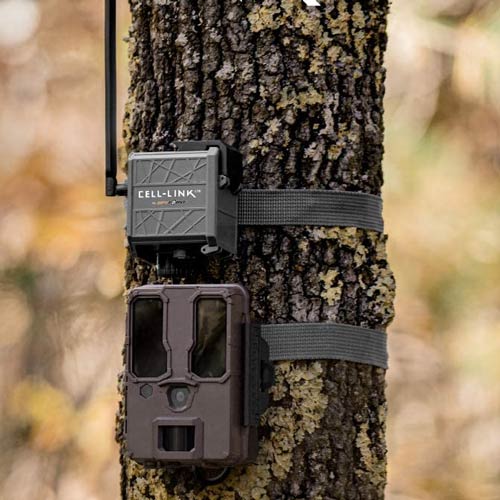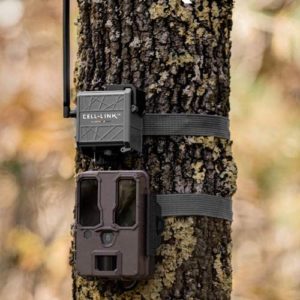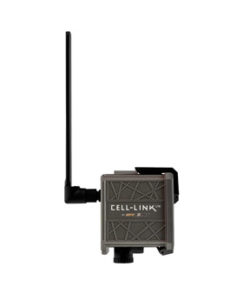Whether you are using it for security purposes or trying to figure out the perfect location for your next hunt, have you ever put your trail camera out to monitor an area and wished that it was a cellular trail camera instead so you could see the pictures it captured right away and eliminate the need to go out to the camera and pull its memory card?
If you are like most of us your answer is probably yes. But how?
So let’s talk about how you can make make your trail camera have cellular trail camera capabilities, what your options are, how much it will cost, and when it makes sense to do it.
Table of Contents
How Are Cellular Trail Cameras Different From Regular Trail Cameras?
To begin, let’s start by pointing out the differences between a cellular trail camera and a regular trail camera.
A cellular trail camera has all the features and functionality of traditional “regular” trail cameras but with the addition of cellular connectivity thanks to their built-in cellular modem and SIM card. This means that you can remotely access and manage your camera using your smartphone, tablet, or computer, as long as there is a cellular signal available. You also receive notifications and images from your camera directly to your device, without having to physically retrieve the camera or its memory card.
What Are the Benefits of Using a Cellular Trail Camera?
Cellular trail cameras offer a number of advantages over traditional trail cameras. Perhaps the most significant advantage is that cellular trail cameras can send images directly to your phone or email, so you can check them without having to retrieve the physical SD card. Additionally, can change the settings on your camera remotely, without having to physically go to the camera’s location. Not only does this make using a cellular trail camera very convenient, but it can save a lot of time and gas, especially if you have multiple cameras or cameras set up in remote locations. Finally, cellular trail cameras help you avoid disturbing game animals, as they do not need to be checked as often as traditional trail cameras.
How Can You Turn a Regular Trail Camera Into a Cellular Camera?
There are a few different ways to turn a regular trail camera into a cellular camera. You can find places online that will show you how to buy a bunch of parts and do this yourself, but the most time and cost-effective way to turn your traditional trail camera into a cellular trail camera is to buy an after-market modem or adapter. These devices typically use a cable to connect to your trail camera and use a SIM card to connect to a cellular network. Once you have it all connected and running you can have photos and videos sent directly to your phone, computer, or app that comes with the device, making it easy to keep track of your camera’s wildlife sightings.
Old (Original) Devices That Turned Regular Trail Cameras Into a Cellular Trail Cameras
Not long after the first cellular trail cameras became available, people got the idea to create a device that would give cellular functionality to existing non-cellular trail cameras. One of the earliest devices designed for this purpose was the Trail Lync Universal Cellular Adapter, which allowed any trail camera to be used as a cellular trail camera. Another device was the Moultrie Mobile Field Modem, which served the same purpose for compatible Moultrie trail cameras.
Trail Lync Universal Cellular Adapter
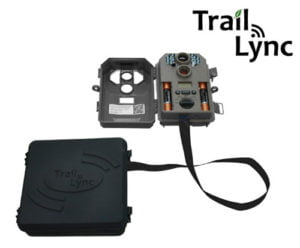
The Trail Lync Universal Cellular Adapter was originally released in about 2014. It turned any trail camera into a cellular trail camera by using its flexible connector cable to connect to the camera through its SD card slot.
While the Trail Lync did its job of allowing users to remotely view their trail camera pictures there were a few drawbacks to the Trail Lync system. One of the biggest drawbacks of the Trail Lync system was its size. The Trail Lync was as large or larger than most trail cameras, making them and the trail cameras they were attached to more difficult to hide. Additionally, the Trail Lync was kind of on the expensive side as its’ price approached $200, which felt like even more money back when it was released. Another downside of the Trail Lync was that it didn’t allow you to change the camera’s settings remotely like you can with many modern-day cellular trail cameras.
The Trail Lync Universal Cellular Adapter is no longer being manufactured or sold.
Moultrie Mobile Field Modems
The Moultrie Mobile Field Modem was another early device that allowed users to turn their traditional trail cameras into cellular trail cameras. These Field Modems connect to compatible 2015 and newer Moultrie cameras using the included USB cable.
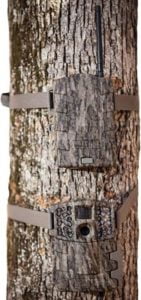
The first Moultrie Mobile Field Modem was the MV1 which was released in 2016. This felt like a pretty groundbreaking concept for those of us who never heard of the Trail Lync or any other similar devices.

The MV1 was followed up in 2018 by the Moultrie Mobile MV2 Field Modem. Both Modems were easy to install and came with a SIM card that you used to activate the service and connect to the cellular network. They also came with a free app that you could use to manage and view your photos. The app is available for both iOS and Android devices.
The Moultrie Mobile Field Modems did a great job at giving compatible Moultrie trail cameras cellular connectivity and probably helped gain more attention and sales for their traditional trail cameras from people who wanted to buy a new traditional trail camera and were thinking about the possibility of one-day upgrading to a cellular trail camera.
Despite being pretty innovative, these devices still had their drawbacks. One of the biggest drawbacks of Moultrie Mobile Field Modems is their size. Much like the Trail Lync adapters before them, they are big and bulky, which can make them difficult to conceal in the woods. Additionally, they are relatively expensive compared to other many entry-level cellular trail cameras or trail camera adapters currently on the market. Another downside is that you cannot change the camera’s settings remotely like you can with many cellular trail cameras. Lastly, they only work with compatible Moultrie trail cameras, not with other brands.
While Moultrie Mobile Field Modems are no longer featured or available for sale on the Moultrie website, at the time this is being written you can still purchase the first generation Moultrie MV1 Field Modem and the second generation Moultrie Mobile MV2 Field Modem on Amazon.
New Devices That Will Make Your Traditional Trail Camera a Cellular Trail Camera
Currently, the SPYPOINT CELL-LINK Universal Cellular Trail Camera Adapter is the only device that will transform your “regular” trail camera, regardless of its brand, into a cellular trail camera by allowing it to send its pictures to you over a cellular network. While the CELL-LINK may be the only current product of its type currently available I wouldn’t be surprised to see products enter this arena as cellular coverage in remote areas continues to improve the cost to access cellular networks continues to become more affordable.
For now, let’s take a closer look at the SPYPOINT CELL-LINK and see what it has to offer.
SPYPOINT CELL-LINK Universal Cellular Trail Camera Adapter
First released in 2020, the SPYPOINT CELL-LINK Universal Cellular Trail Camera Adapter is a simple device that will allow you to turn any trail camera that uses a standard-sized SD card into a cellular trail camera. Taking a page out of the Trail Lync’s book, connecting the CELL-LINK to your trail camera is simple, using the SD cable adapter that you insert into your camera’s SD card slot. Once connected, the easy-to-use CELL-LINK will soon be sending pictures to your phone or tablet.
The CELL-LINK also comes with a free app that you can use to view and manage the pictures that are sent to you.
Pros
- Small size- Its compact size makes the CELL-LINK and your trail camera easy to conceal
- Very affordable – Costing about as much as many entry-level trail cameras you can probably buy two or three CELL-LINKS for the cost of one entry-level cellular trail camera, making the CELL-LINK ideal for people who already own one or more traditional trail cameras
- Works with all major trail camera brands and models that use standard-sized memory cards
- Affordable data plan options
Cons
- Doesn’t transmit video
- Doesn’t allow you to change your camera’s settings through the mobile app
If you want to learn even more details you may want to check out our SPYPOINT CELL-LINK review where we took an even closer look at it.
The SPYPOINT CELL-LINK Universal Cellular Trail Camera Adapter comes in two versions, the CELL-LINK, which can connect to AT&T’s cellular network, and the Cell-Link-V, which can connect to the Verizon network. Both versions are available for purchase on Amazon.
No products found.
When Should You Convert Your Old Trail Camera to a Cellular Trail Camera?
There are many times when someone might want to upgrade their old trail camera so it can be used as a cellular trail camera, but one thing that everyone has in common is that they have traditional (non-cellular) trail camera(s) that they would like to continue using. Beyond that, some of the more common situations when people choose to buy a device that gives their traditional trail camera cellular functionality are listed below.
- You live a distance from where your trail camera is posted and want to save money and time you spend checking trail cameras
- You want, or need, to see what your trail cameras capture more frequently (maybe even immediately)
- There is a cell signal in the area you want to monitor
Don’t Forget About Cellular Data Plans
Much like your cell phone needs a monthly subscription you need to have a data plan in order for your trail camera to send you pictures and videos. This is true whether you are using a cellular trail camera or you are using an adapter/modem with your existing trail camera.
Thankfully, the cost of these plans has decreased over the years, and each device usually has multiple plans from which you can choose, in order to better match the activity in your area with your budget.
Below we show an example of the current data plan options that are available for SPYPOINT devices. If you want to learn more about cellular data plans for trail cameras and how they work you can check out our article about the Best Cellular Trail Camera Data Plans.
| Plan | Number of Photos | Cost Per Month if Paid Monthly | Cost Per Month if Paid Annually |
|---|---|---|---|
| FREE | 100 | FREE | FREE |
| Basic | 250 | $5 | $4 |
| Standard | 1,000 | $10 | $7 |
| Premium | Unlimited | $15 | $10 |
Note: High resolution image and video downloads are not included with the SPYPOINT data plans. However, for $5 you can purchase a package of 50 FULL-HD Photo downloads or 20 HD video downloads (for cameras that can record and transmit video). Like other cellular trail camera data plan providers, SPYPOINT sends you compressed (less detailed) copies of images to reduce the amount of data being used. However, instead of going out to your trail camera and risk disturbing game animals to retrieve the high-resolution version of the photos that are saved on your SD card, SPYPOINT allows you to have the option of paying $5 to have 50 full HD resolution versions of images, that you select, sent to you on your smartphone app. Honestly, most of the time you will be just fine with having the lower-resolution copies sent to you, but sometimes you will run across situations where being able to see the extra detail in those full-HD photos will be very helpful. |
|||
Final Thoughts
If you have a traditional trail camera that you would like to send pictures to your smartphone or tablet, then a cellular trail camera adapter is a great way to do it. It will allow you to use your trail camera as a cellular trail camera without having to purchase a new one. The SPYPOINT CELL-LINK and Cell-Link-V are both very affordable options, and they offer the ability to connect to the cellular network via AT&T or Verizon. They also come with a free app that you can use to view and manage the pictures that are sent to you.
If you are someone who already owns several traditional trail cameras, having a fleet of cellular trail cameras sending you pictures is now easily within your budget thanks to cellular trail camera adapters.
Last update on 2024-04-24 at 12:20 / Affiliate links / Images from Amazon Product Advertising API

